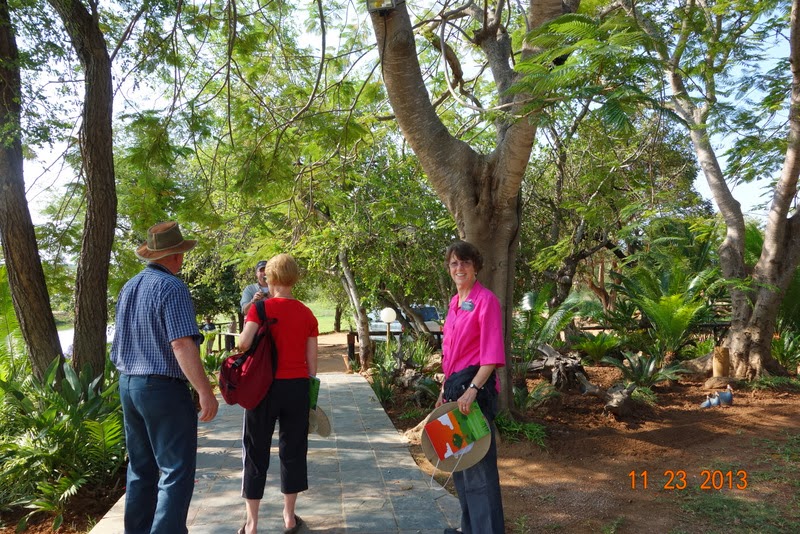 |
Kudu cows. |
 |
If you don't recognize these....... |
 |
Something hiding in the bush. |
 |
Wart hogs and piglets. |
 |
Grounds with pond at Elandela private game reserve. |
 |
Elandela. |
 |
Elandela and our group. |
 |
Purple wasp common in the area. |
 |
Flowering tree, Elandela. |
 |
Dragonfly. |
 |
Seated on carved wood chairs, Elandela lodge. |
 |
Elandela lodge. |
 |
Elandela lodge. |
 |
More Elandela lodge. |
 |
Dining area, Elandela Lodge. |
 |
Grounds, Elandela Lodge. |
 |
We liked the covered truck. |
 |
Flowers on the flowering tree. |
 |
Grounds, Elandela. |
 |
Two orphaned rhinos raised from babies. One had cataracts which were corrected by an operation. They are male and female and will be released when mature. |
 |
The name "white" came from German "weit" meaning wide, broad, referring to the mouth. |
 |
Here's lookin at you. |
 |
Apparently dung beetles prefer rhino dung because they make huge dung balls with it, while the ones we saw made from elephant dung were much smaller. |
 |
One of the guides at Elandela explaining about the Rhinos. |
 |
Tough hide. |
 |
Never approach a Warthog den from the front of the entrance. They back in and exit precipitously when threatened with enough force to break your leg. |
 |
Termite mounds are raided by Aardvarks and later exploited by many animals for dens. The outside is like concrete. |
 |
Plaited lizard about 18 inches long. |
 |
Entering the white lion breeding area of about a thousand hectares. |
 |
White lioness. These occur only in this area of South Africa due to a recessive gene. It is not albinism, but simply a lack of the tawny pigment in the fur and the occurrence of blue eyes. |
 |
Male white lion. They had just eaten a wildebeest and were panting hard in order to help digest the 20 to 30 kilos of raw meat. |
 |
Blue eyes, and what sharp teeth you have! |
 |
Lolling around digesting. |
 |
Wildebeest carcass remains. |
 |
Jackal scouting out the possibilities for later when the lions are asleep. |
 |
Vultures patiently awaiting the scraps. |
 |
| Large Impala buck. |
 |
Giraffe. Females have hair tufts on top of their horns, males do not. |
 |
Male or female? |
 |
Look at that pattern. |
 |
They bear large flowers which produce a fruit that is dried and made into tartar sauce. |
 |
Water buck at night. They have a white circle around their rears. That one must have some environmental explanation. |
 |
The round "target" illuminated with a flood light. |
 |
Swarming termites attracted to the lamps at the entrance gate. |
 |
Mantis on bricks. |




No comments:
Post a Comment